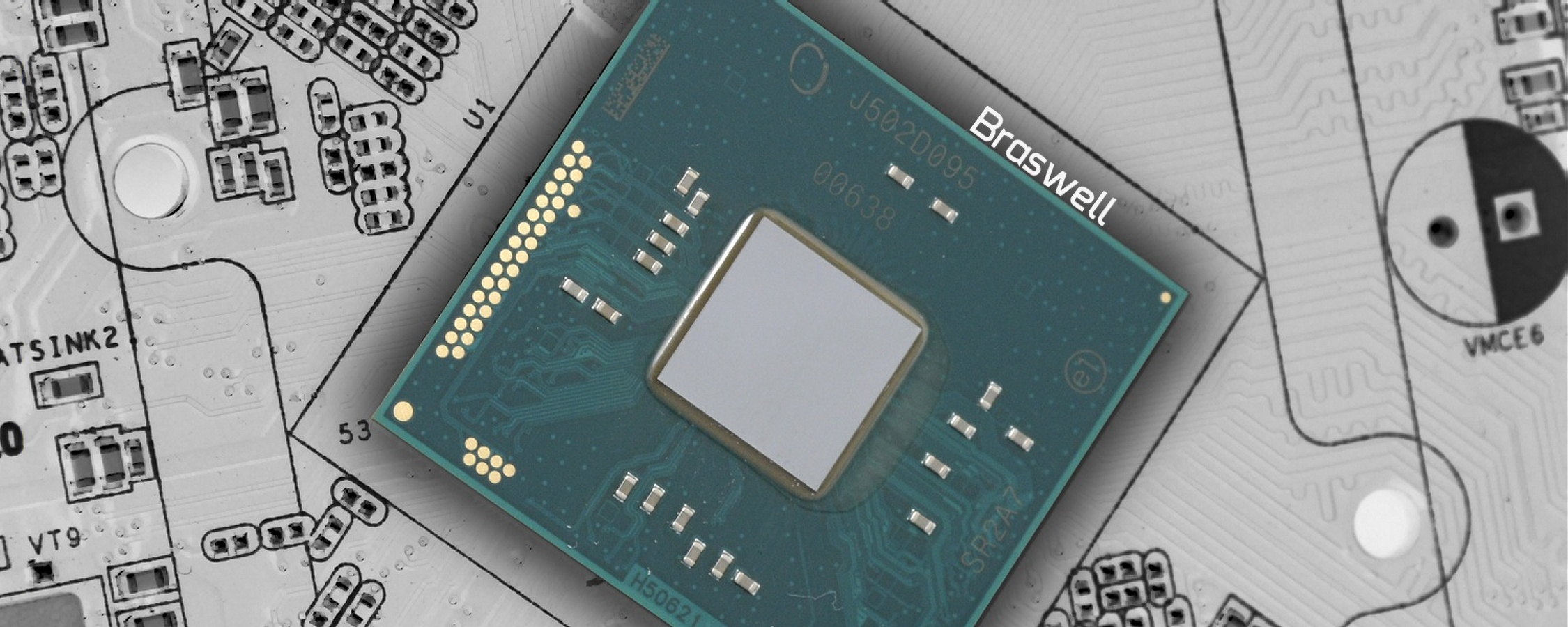Synthetic Benchmarks
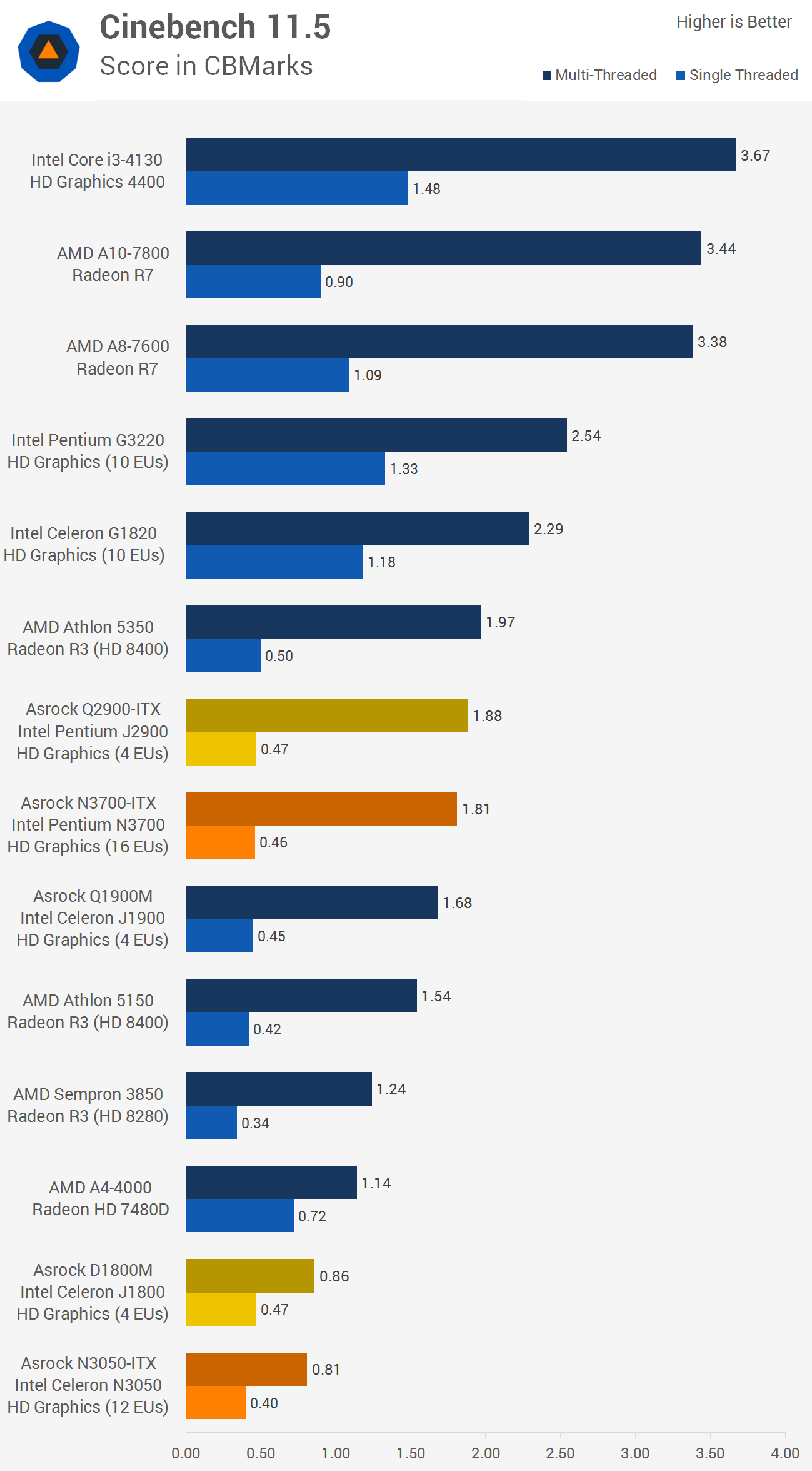
Although both the Pentium N3700 and Celeron N3150 were slightly slower than their equivalent Bay Trail-D parts, their base clock is also 33% slower. Keeping that in mind, it's impressive to find that both were only a fraction slower.
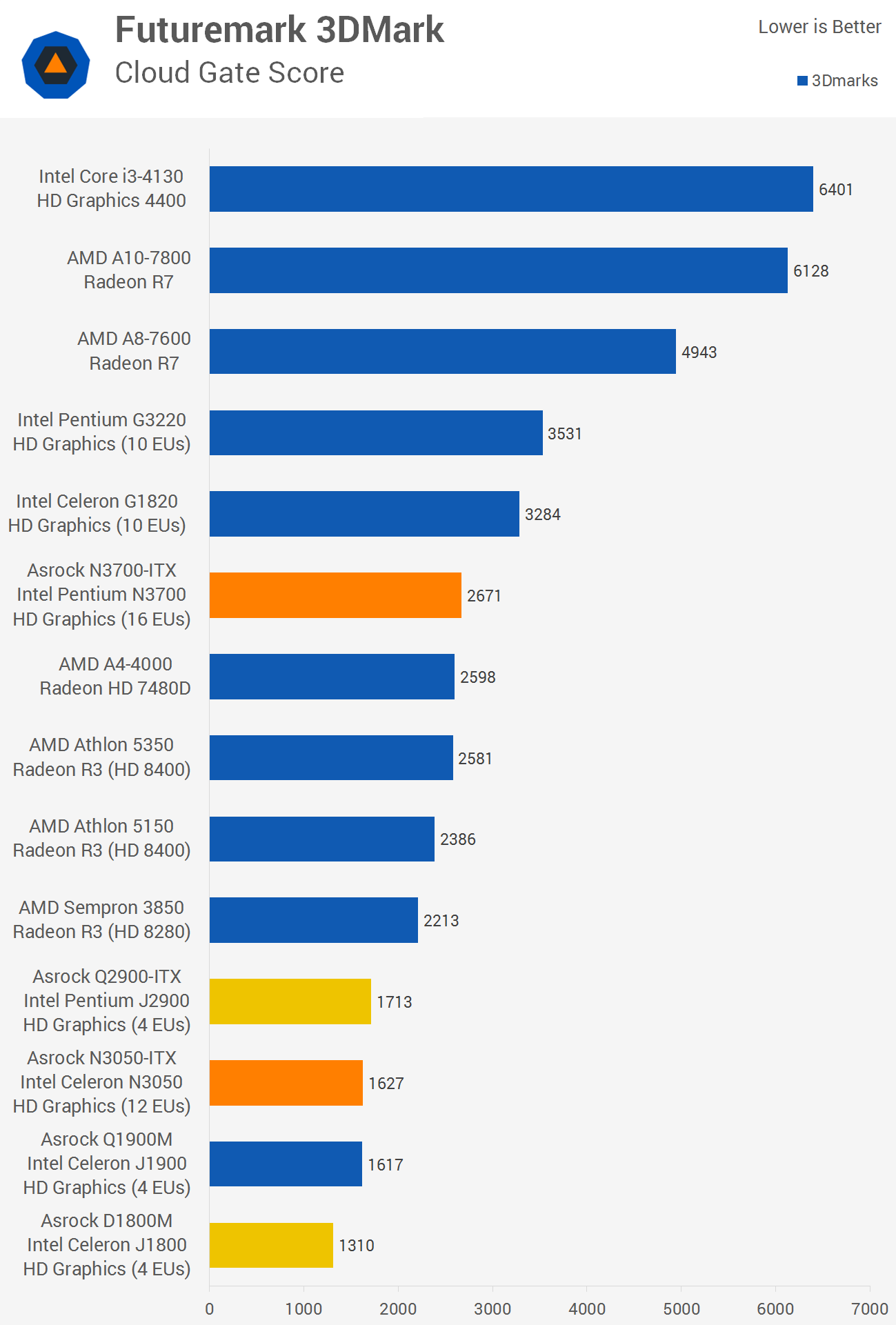
Already we see a huge improvement in 3D performance as the Pentium N3700 scored 958pts more than the Pentium J2900, making it 55% faster and comparable with the Athlon 5350. The Celeron N3150 wasn't quite as impressive despite being 24% faster than the Celeron J1800.
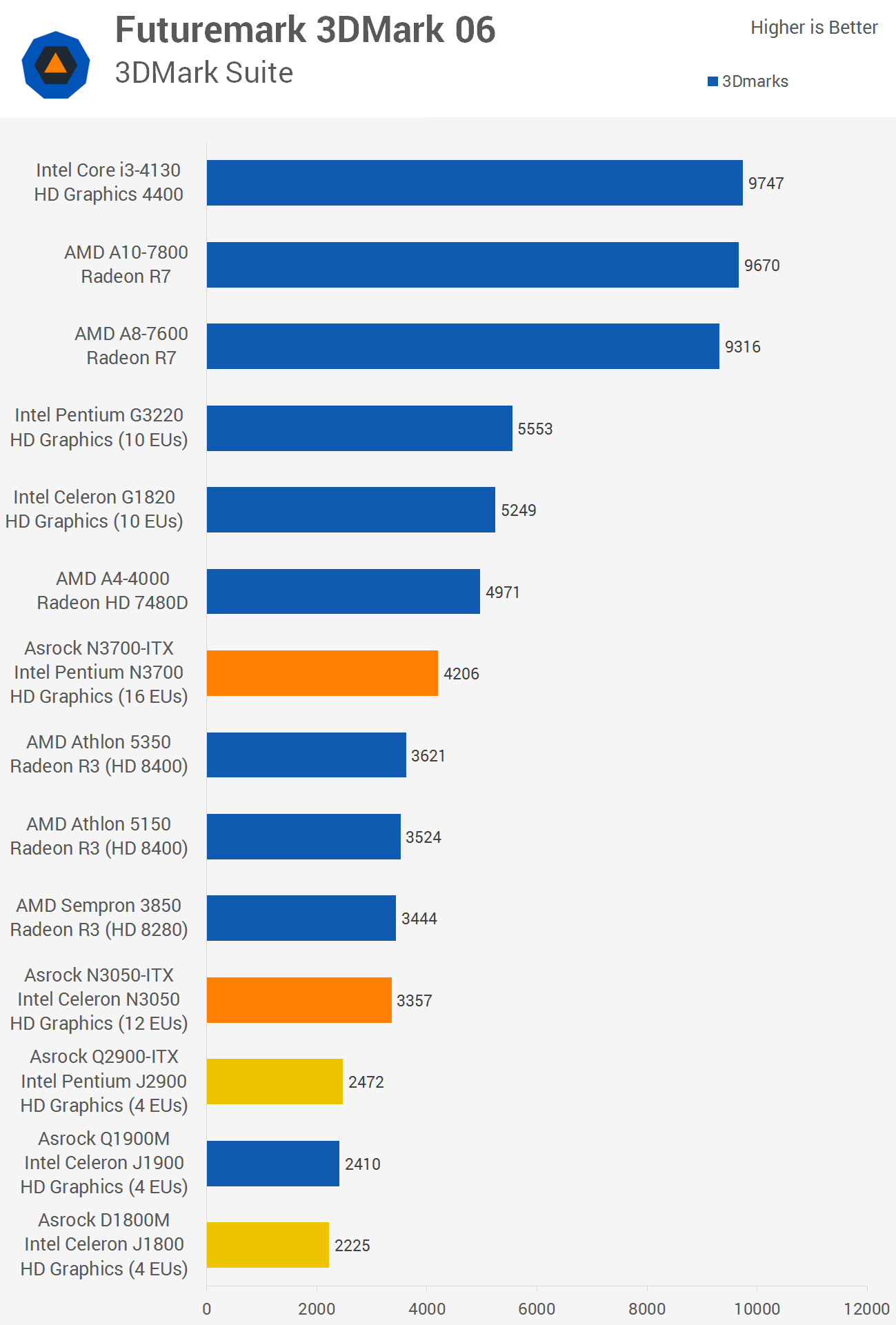
This time the Pentium N3700 was 70% faster than the J2900 when measuring 3D performance using 3Dmark 06. This meant that the N3700 was just 15% slower than the AMD A4-4000, but 16% faster than the Athlon 5350.
The Celeron N3150 also did well, delivering 51% more performance than the J1800 and 36% more than the J2900.
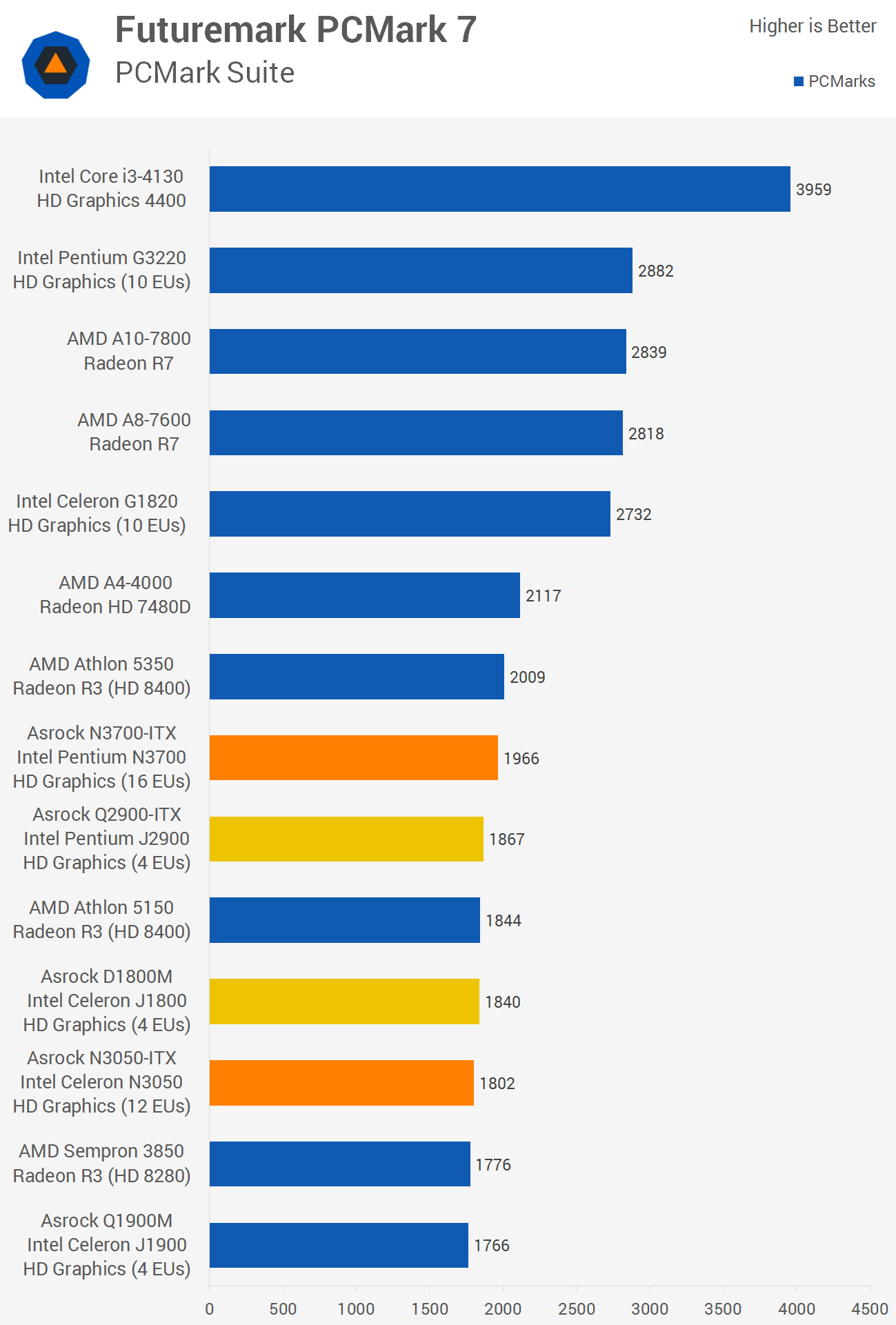
The PCMark 7 performance remained much the same, though despite a clock speed disadvantage the Pentium N3700 just managed to pull ahead of the J2900. The Celeron N3150 reproduced the performance seen previously with the J1800.
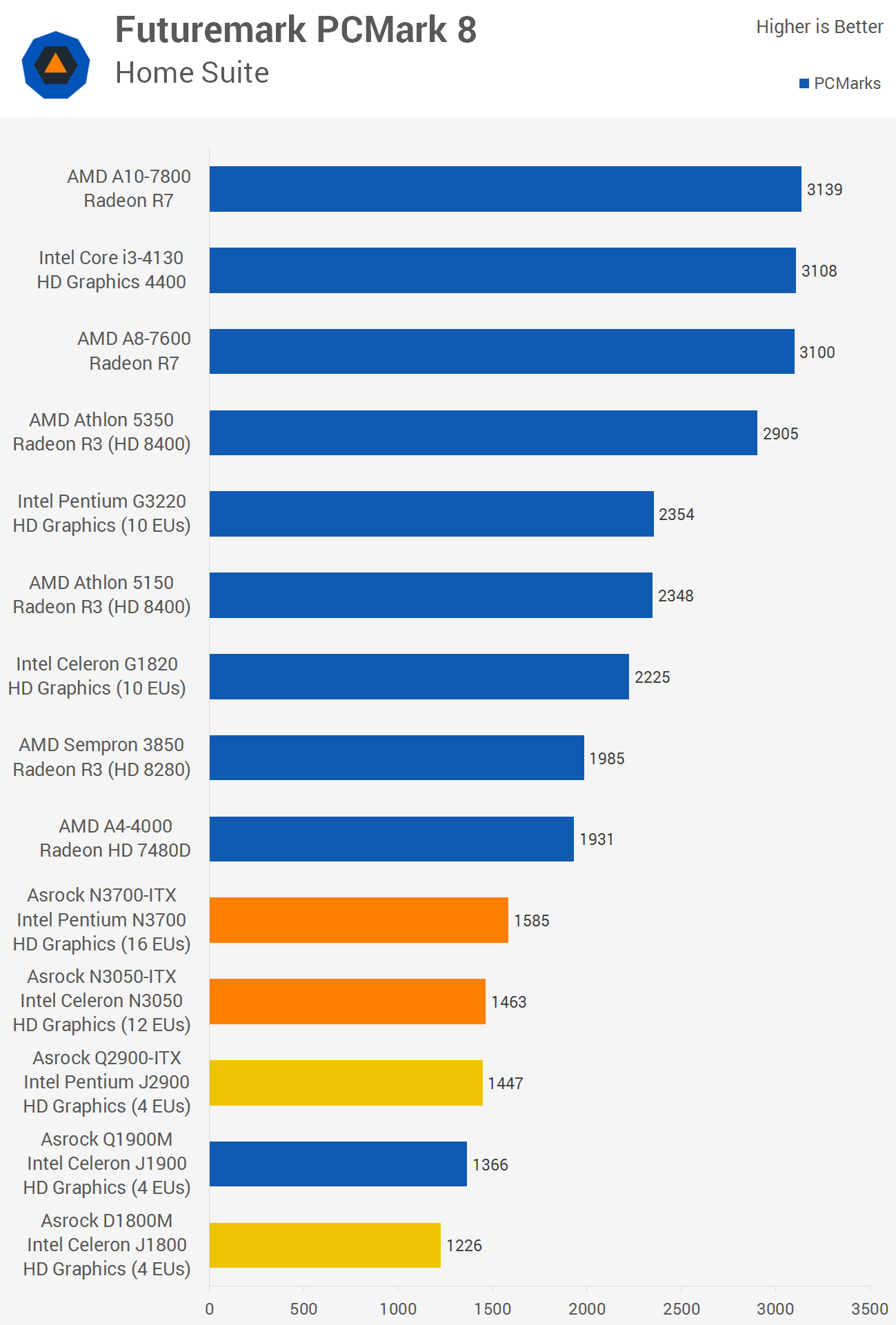
The new Braswell SoCs performed well in the PCMark 8 home suite, with the Celeron N3150 even beating the Pentium J2900. The margins weren't huge but the Pentium N3700 was 10% faster than the J2900 despite being clocked at least 7% slower.
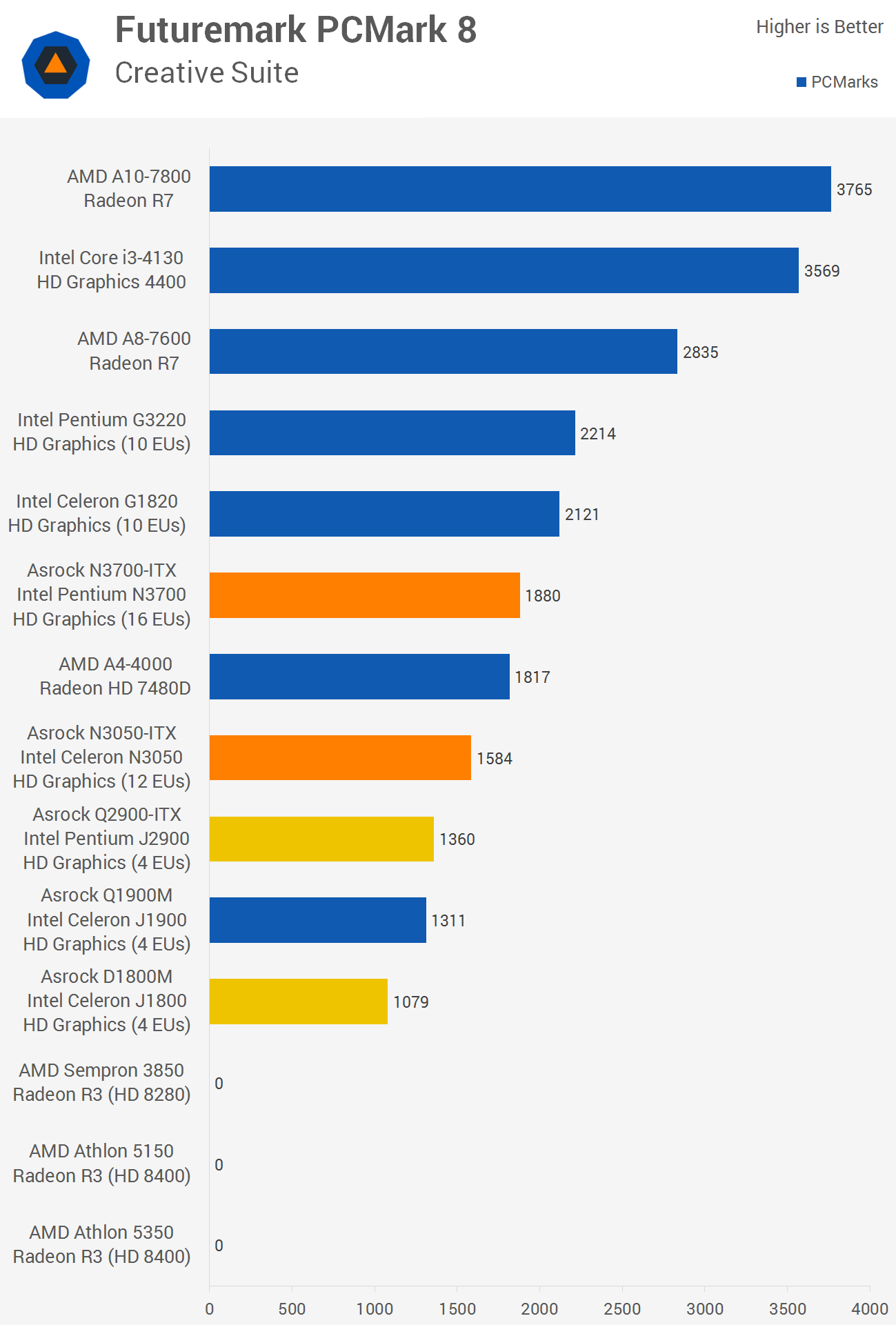
The PCMark 8 creative results were impressive as the Pentium N3700 was 38% faster than the J2900, while the Celeron N3150 was 47% faster than the Celeron J1800, scoring 1360pts.
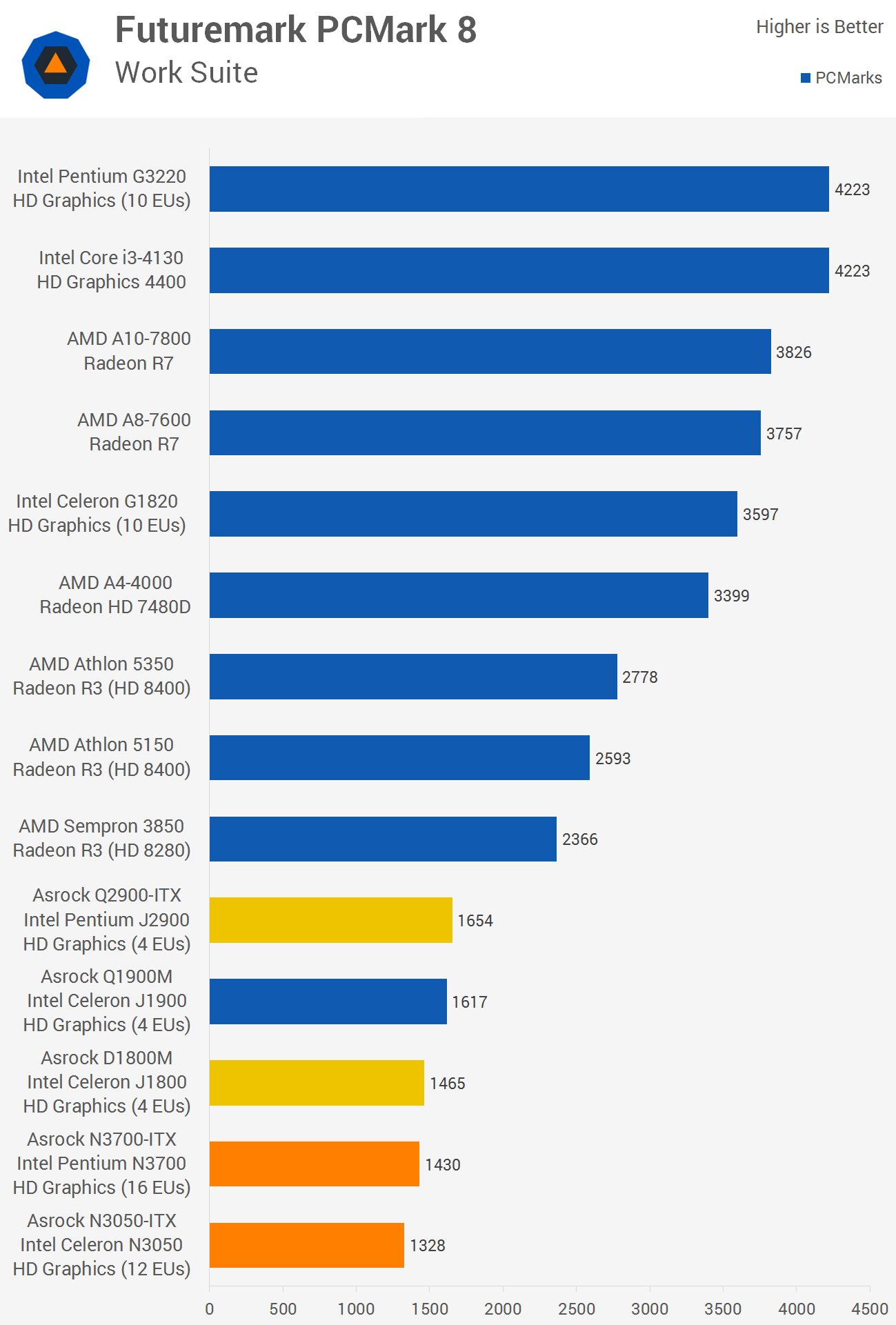
Despite highly positive results in the home and creative tests the Braswell SoCs struggle with the PCMark 8 work suite. Here even the Pentium N3700 was slower than the J1800.
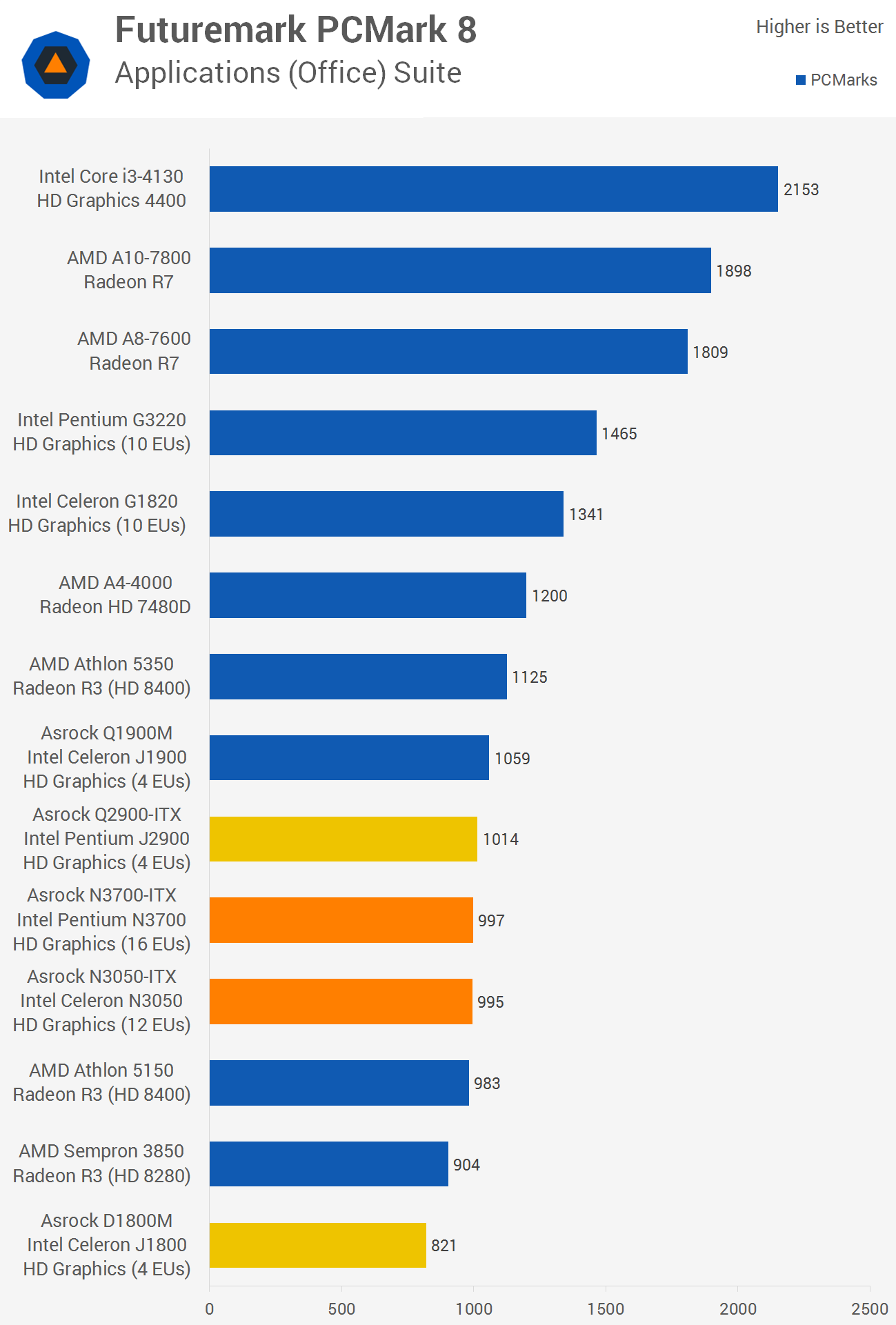
The Pentium N3700 and Celeron N3150 recovered simply in the applications suite, though the N3700 still lost out to the J2900.
